Foil board interaction: Study of the action of the foil on the speed range preceding foiling
The examples of boards in the previous chapter were examples based on a study of width/thickness ratio and given buoyancy, we will refocus our attention on the influence of the interaction of the foil and will use the notion of length/width ratio that we have defined as more significant in terms of planing performance. We will also start with a model of a board that has actually been built, (Wood kit tool ShaperWaveDynamics)
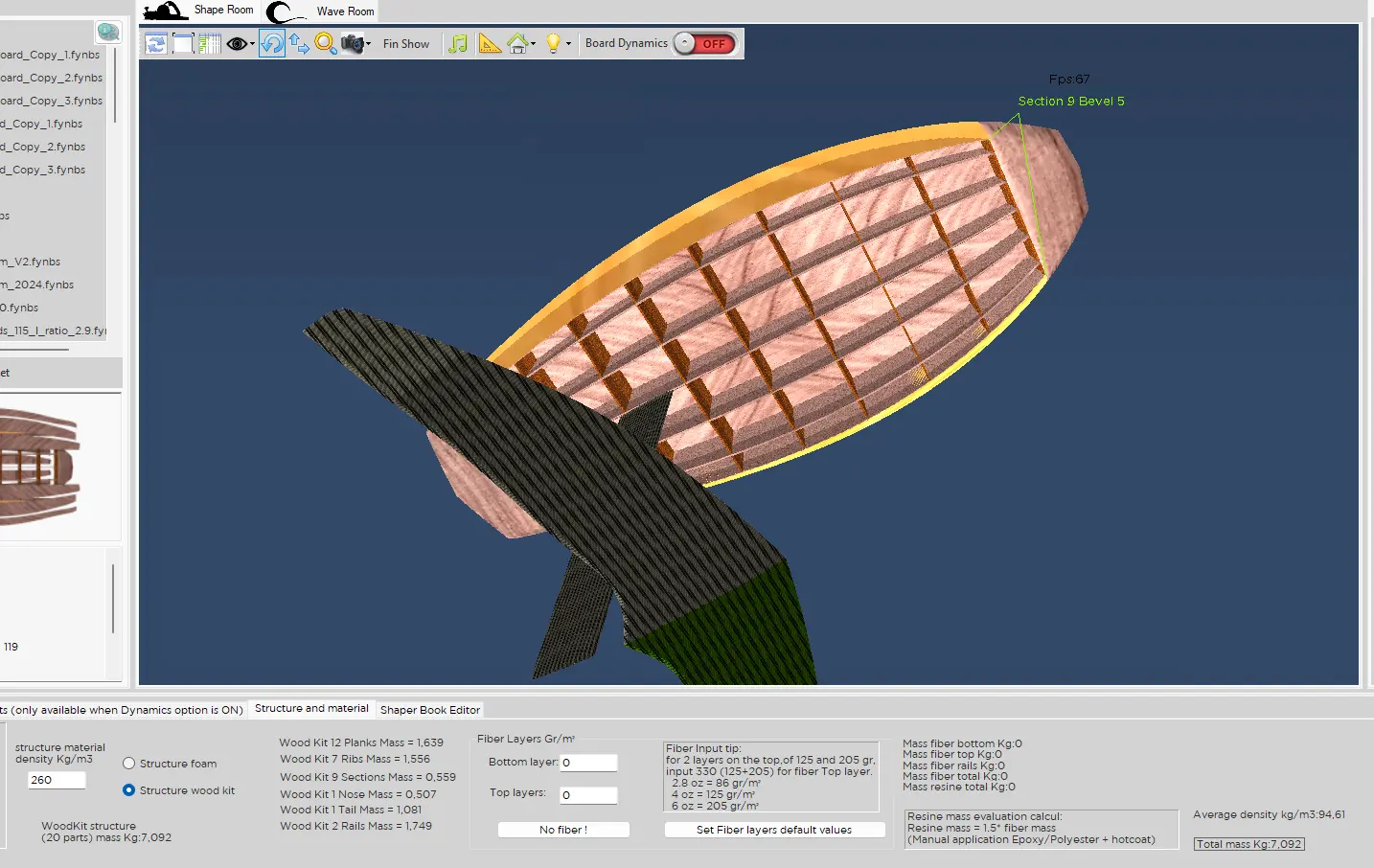
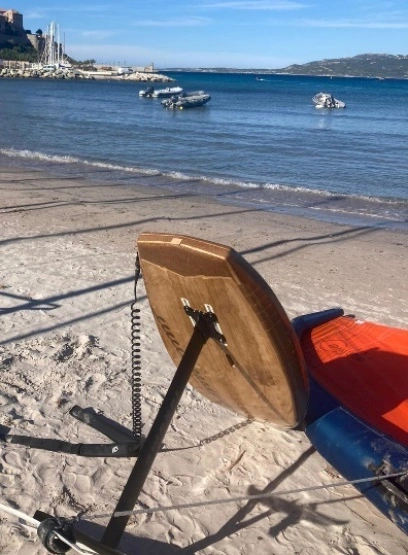
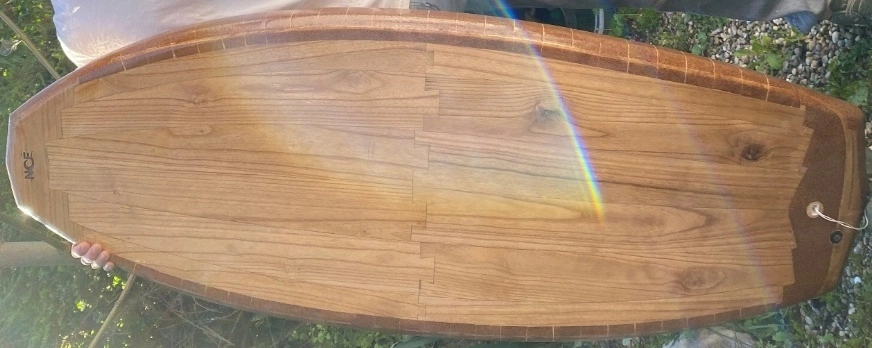

We are going to test this board with a 70 kg surfer and observe the interaction of the foil. The study of the interaction of the foil requires us to be more precise in the description of the configuration. Let's start by describing the foil used and its installation :
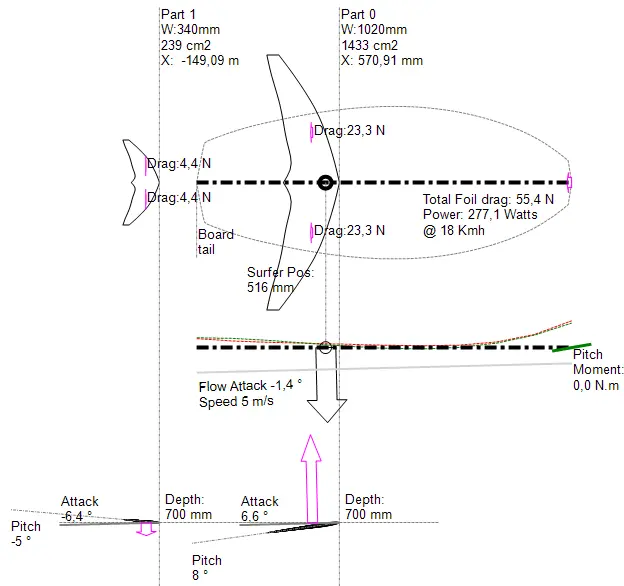
This layout diagram (above, ShaperWavesDynamics foil tool) shows the foil that was selected for this test. Due to its location, the foil imposes the position of the surfer on the board during the foiling phase: The surfer must align his center of gravity with the overall center of lift of the foil so as not to generate a pitch moment and thus ensure balance horizontal of the board. In this diagram, the pitch angle designates the angle between the bottom of the board (at the wide point) and the chord of the foil profile at its center, this angle does not vary, it is fixed by the setting of the plate of the mate on the board. The “flow attack” refers to the angle between the bottom of the board and the surface of the water. The “Attack” angle of the foil profiles indicates the angle between the profile chord and the relative flow. In this diagram and those that follow, the forces are shown for a given speed (here 5m/s), and the Flow attack angle is adjusted to generate an overall lift equal to the surfer + board weight. The pink arrows show the forces which accumulate to give a resultant of overall lift and drag, the black arrow is the weight vector. The misalignment of the overall lift-weight vectors generates pitch torque.
Let us take advantage of this description to recall that the stabilizer has the effect of moving the overall center of lift according to the force it generates: In the diagram above, the pitch moment is zero, this means that the surfer's center of gravity and the global center of gravity are aligned, but if I modify the “pitch” angle of the stabilizer which was at -5, and I change it to zero, the global center of lift will be modified as well as the moment of pitch:
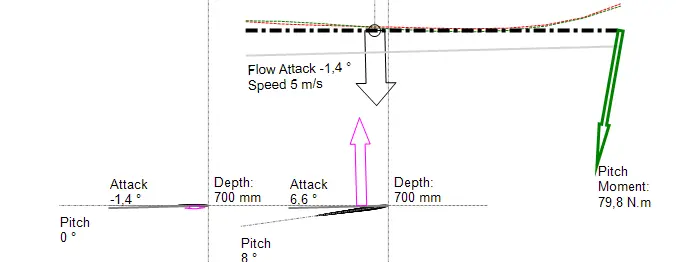
 A function of the SWD software allows you to update the angle of attack according to the new setting, and to align the weight of the surfer (black arrow) with the center of global lift to find the equilibrium position, we Let's use this to show new balance (pitch moment=0): The surfer went from position 516mm to 444mm from the tail to restore balance. We therefore see that the setting of the stabilizer modifies (among other things) the longitudinal equilibrium position of the surfer. We will keep this configuration to edit our performance curves for the board and foil. I hear the experts exclaim that a pitch of 8° is nonsense, but I ask them for a little indulgence for this example of an optimization approach starting from afar...
A function of the SWD software allows you to update the angle of attack according to the new setting, and to align the weight of the surfer (black arrow) with the center of global lift to find the equilibrium position, we Let's use this to show new balance (pitch moment=0): The surfer went from position 516mm to 444mm from the tail to restore balance. We therefore see that the setting of the stabilizer modifies (among other things) the longitudinal equilibrium position of the surfer. We will keep this configuration to edit our performance curves for the board and foil. I hear the experts exclaim that a pitch of 8° is nonsense, but I ask them for a little indulgence for this example of an optimization approach starting from afar...
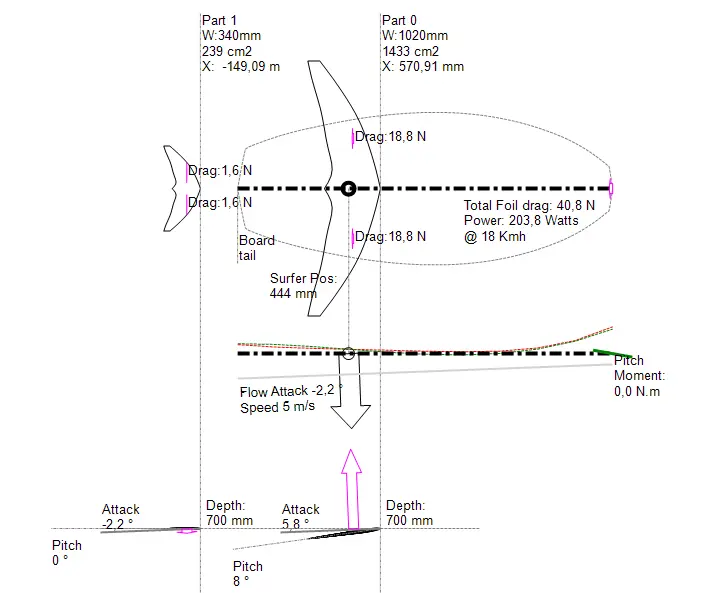 Note here that the mast and the fuselage are not integrated into the accumulation of forces. Above. The calculation of the drag of the mast depends largely on its submerged surface, we will be able to very simply evaluate the drag of the mast that we insert into the project like an aileron, and use the aileron editor of the SWD software to display its drag at a given speed:
Note here that the mast and the fuselage are not integrated into the accumulation of forces. Above. The calculation of the drag of the mast depends largely on its submerged surface, we will be able to very simply evaluate the drag of the mast that we insert into the project like an aileron, and use the aileron editor of the SWD software to display its drag at a given speed: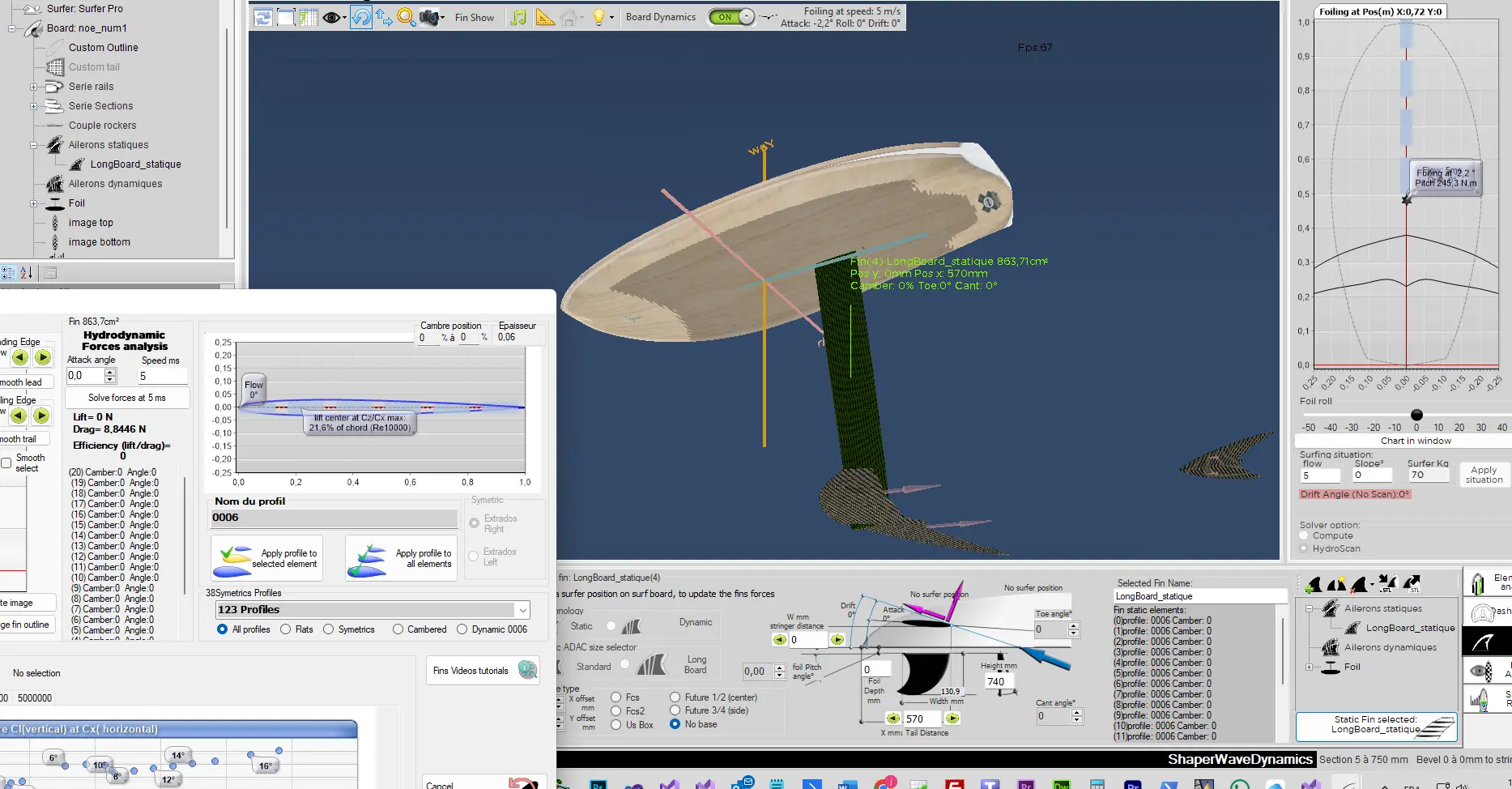
The aileron editor tells us for example here that the implanted mast generates 8 newtons of drag at 5m/s. The submerged depth of the mast being variable, we will only take into account in our study of board performance the supporting parts of the foil and will therefore neglect the drag of the mast (and the fuselage), which we could add later if it is useful to us.
Let's edit a first performance curve for our foil + board set with a 70kg surfer and a board weight (Wood kit) of 7.1kg:
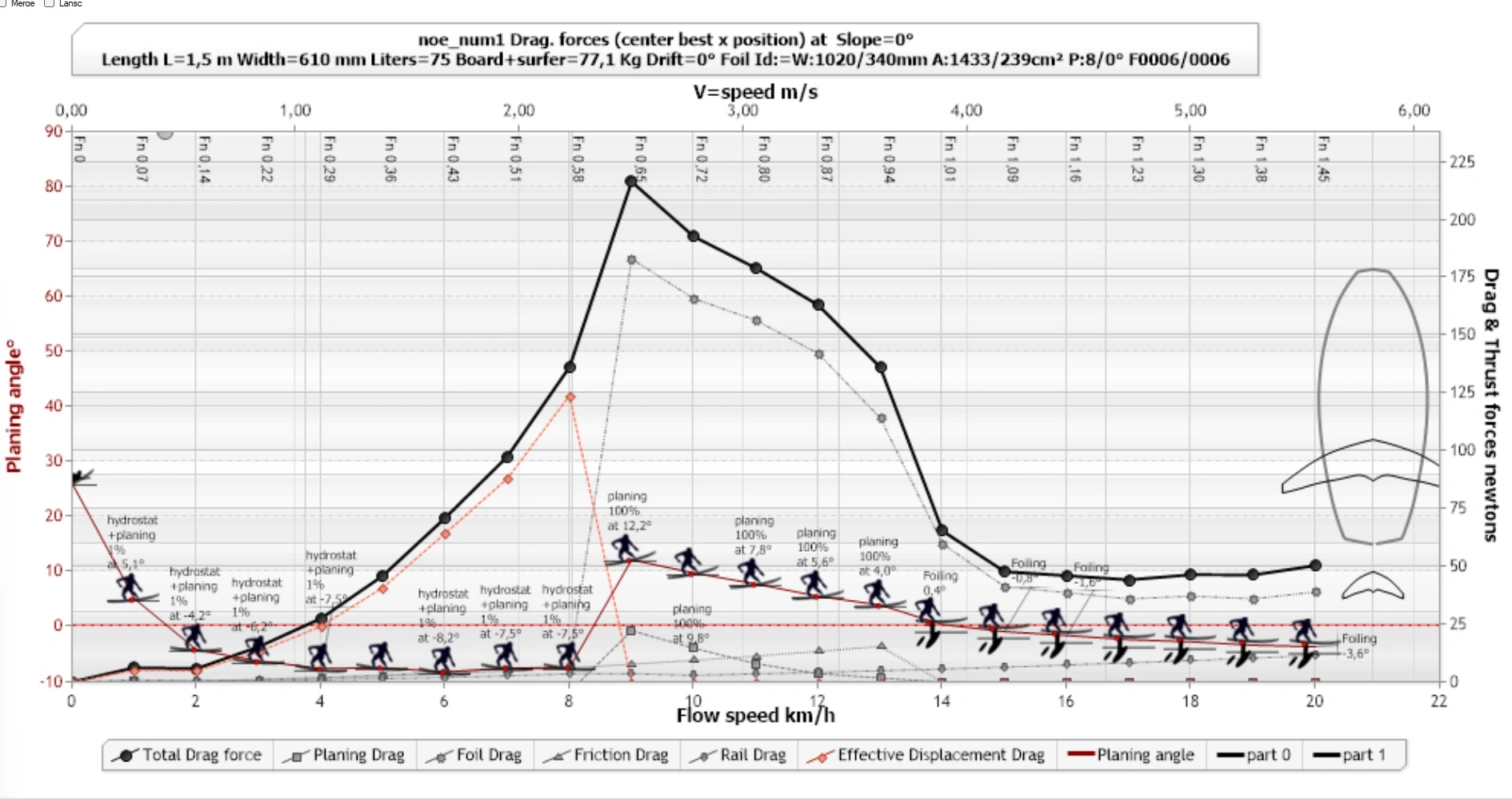
And let's see how to use this performance analysis tool to improve our foil setup, To begin with, it is important to know at what speed we want to take off, here the takeoff is at 14 km/h, knowing that a wave surfing speed of 1m is between 15 to 20 km/h we will estimate that everything is fine for a surf foil. A larger wingspan must be selected for a low-speed pumping-type flight project, for example… Then let's evaluate the peak drag (220 newtons): If it is generated by the movement before planing, we can only reduce it by modifying the outline of our board in order to generate planing at lower speed. But we notice that the peak is generated mainly by foil drag. Another clue should attract our attention in the pre-planning phase:
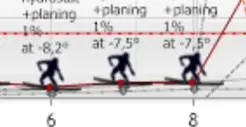
The angle of incidence in the hydrostatic + planing transient phase is negative, this is symptomatic of a poor foil setting configuration which is not in line with the planing angle of the board. Without further delay, we will modify the foil setting angles in the foil configuration tool: To simulate a different overall foil setting, we modify (in the SWD foils tool) the setting of the main wing and the stabilizer by the same value:

We will use a function of the foil tool which allows you to adjust the pitch of the foil wings to provide the best finesse (lift/drag) when the flow angle is parallel to the bottom of the board. This is a good starting assumption. The new pitch being set, we reposition our surfer to balance the pitch moment at zero (its position was 444 mm from the tail, it goes to 497 mm)
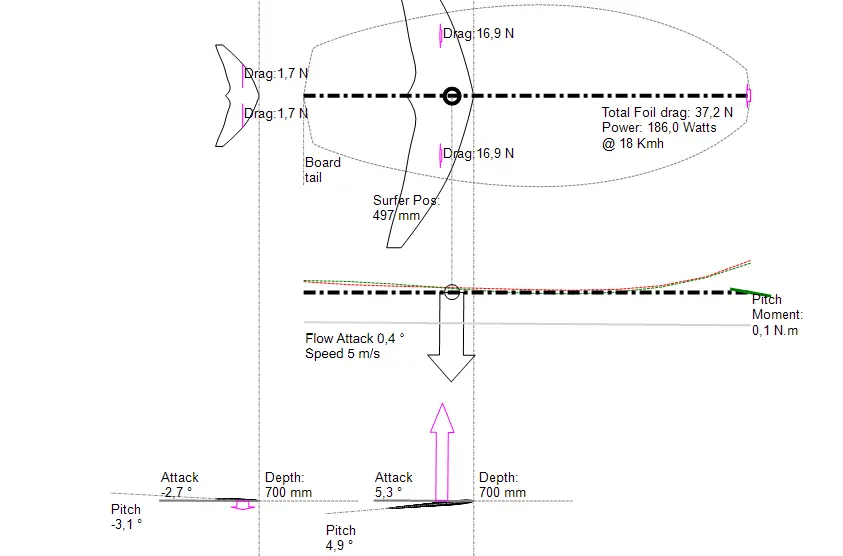
And we restart the performance test with this new configuration:
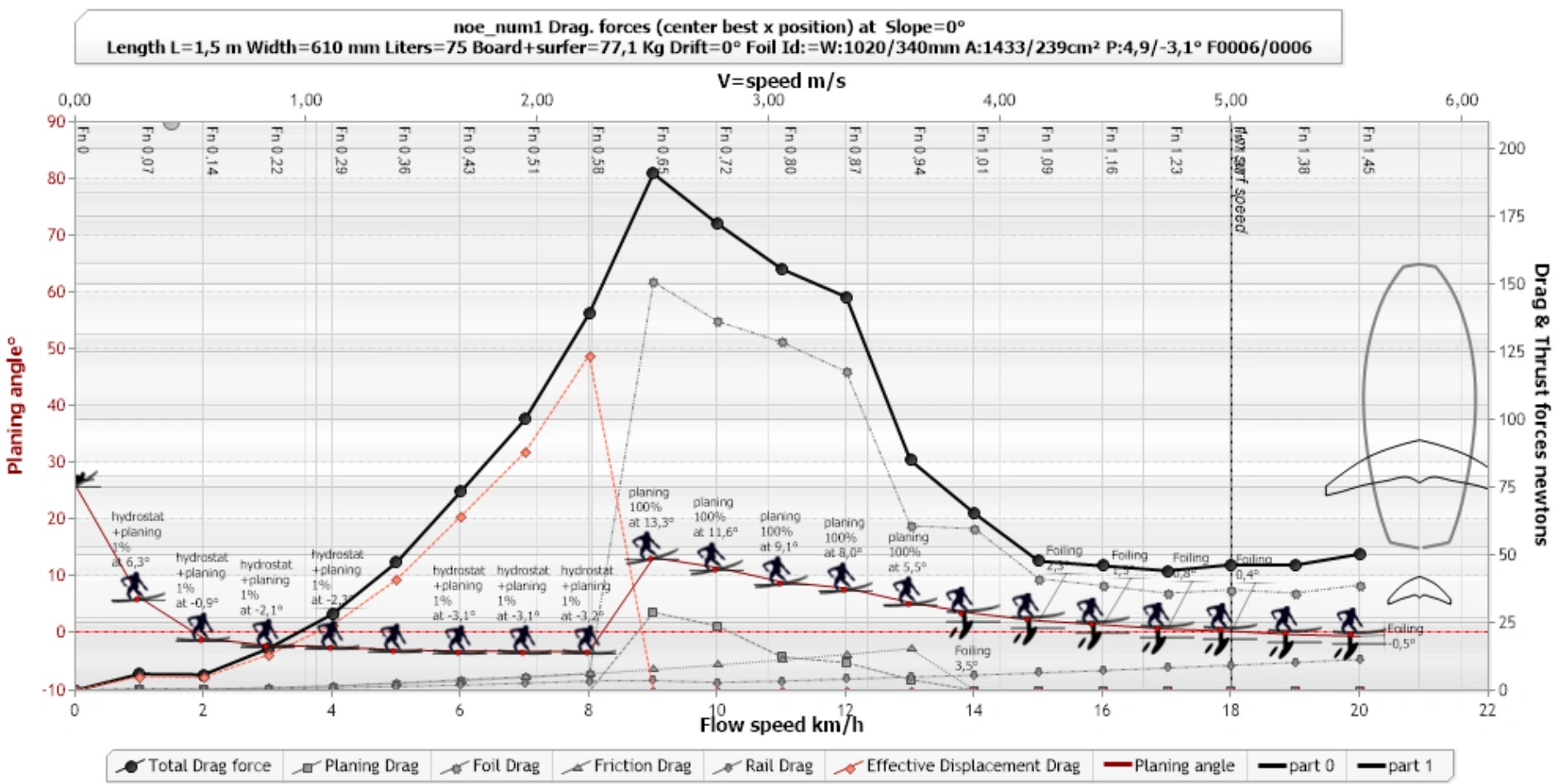
This new foil setting reduces the peak drag, which went from 220 to 190 newtons. We are going in the right direction, but the negative angles in the transitional phase, and the foil drag at the start of planing remain suspect. Let’s further reduce our pitch angle to apply a pitch of zero to the main wing
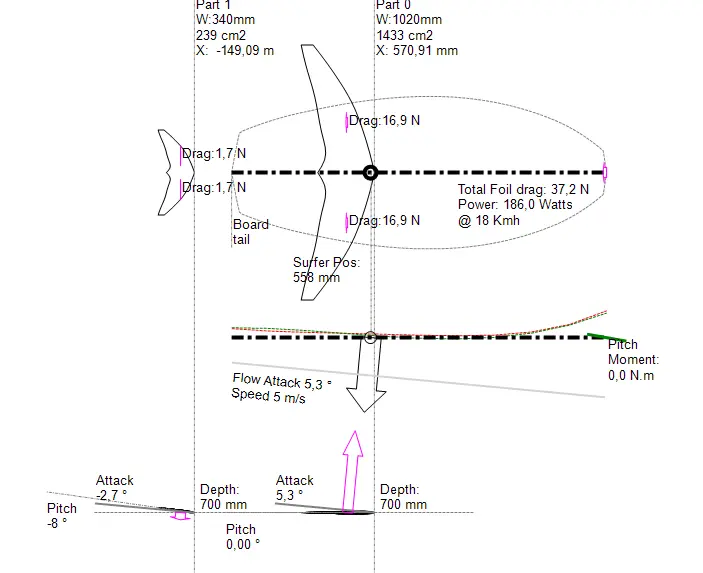
And let's run our performance test again:
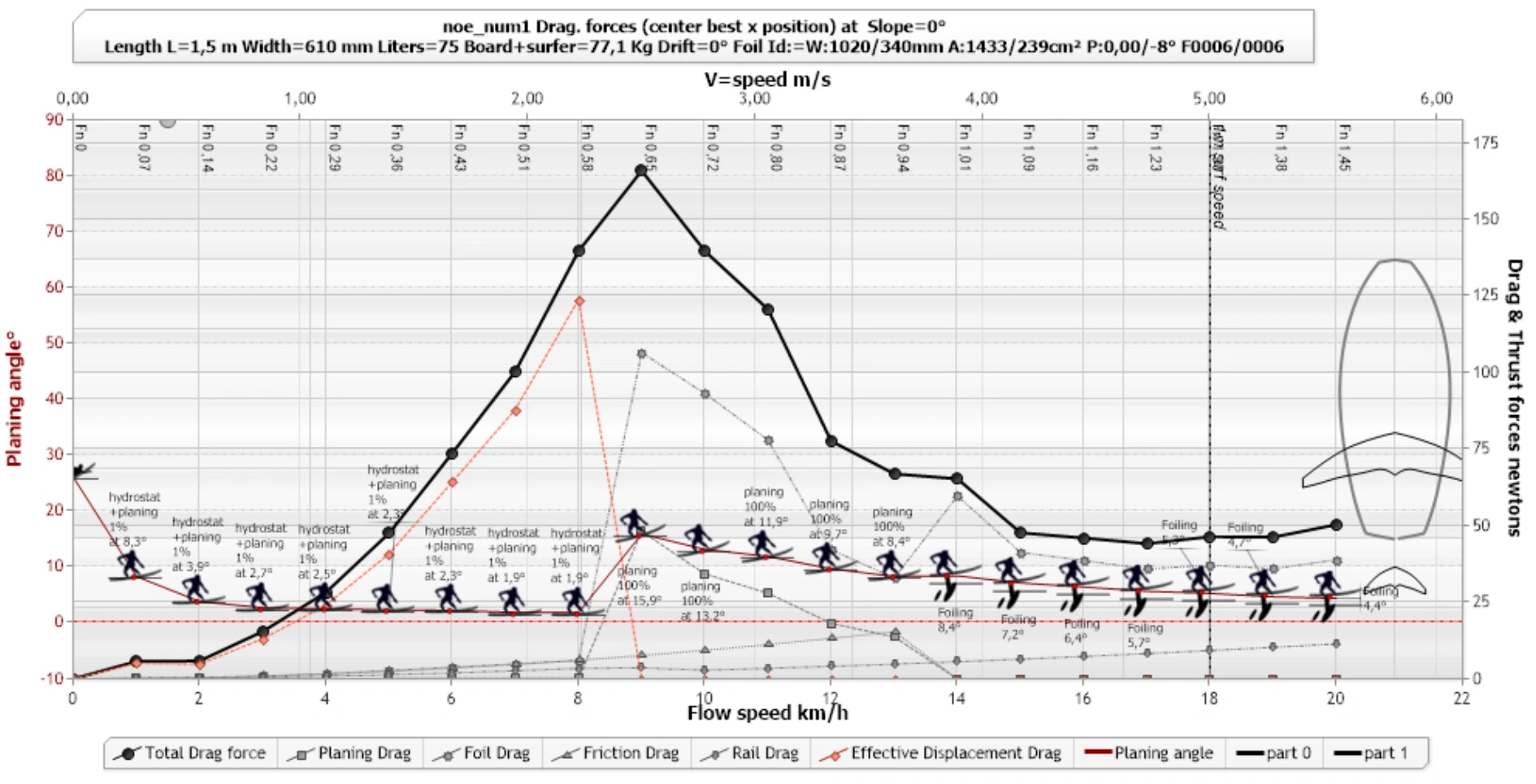
This zero foil setting further reduces the peak drag, which went from 190 to 160 newtons. We are making progress, the angles in the transient phase are positive, but the foil drag at the start of planing still remains greater than the planing drag, this reveals an optimization that is still possible. Let's further reduce our pitch angle to apply a pitch of -5° to the main wing, without forgetting to replace our surfer (center of gravity): in the balance position which will now be 620 mm from the tail:
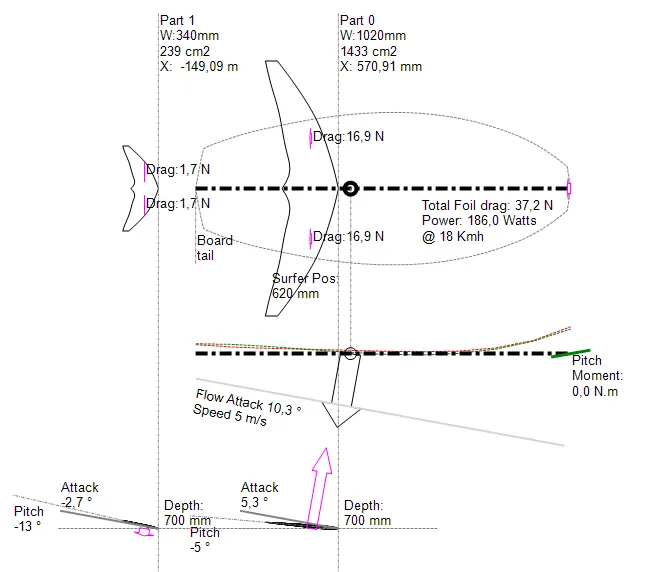
And let's run our drag performance test again:
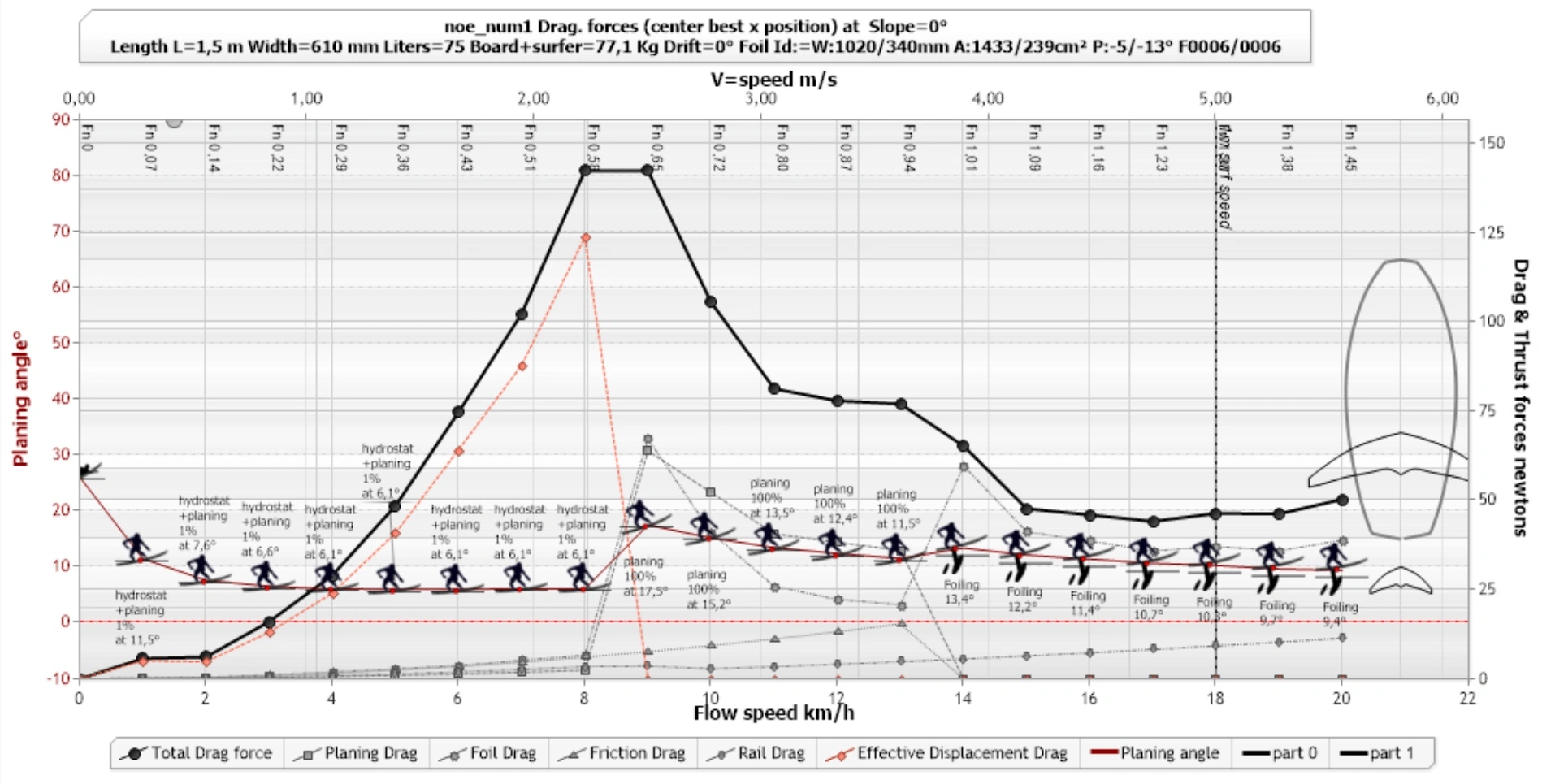
Our peak drag at 140 newtons is composed of half planing drag and half foil drag, we can estimate that this is a very good compromise in terms of drag: We can say that our foil setting is satisfactory . We will now add new information to our graph: The equilibrium position of the surfer at various speeds: (curve with orange diamonds):
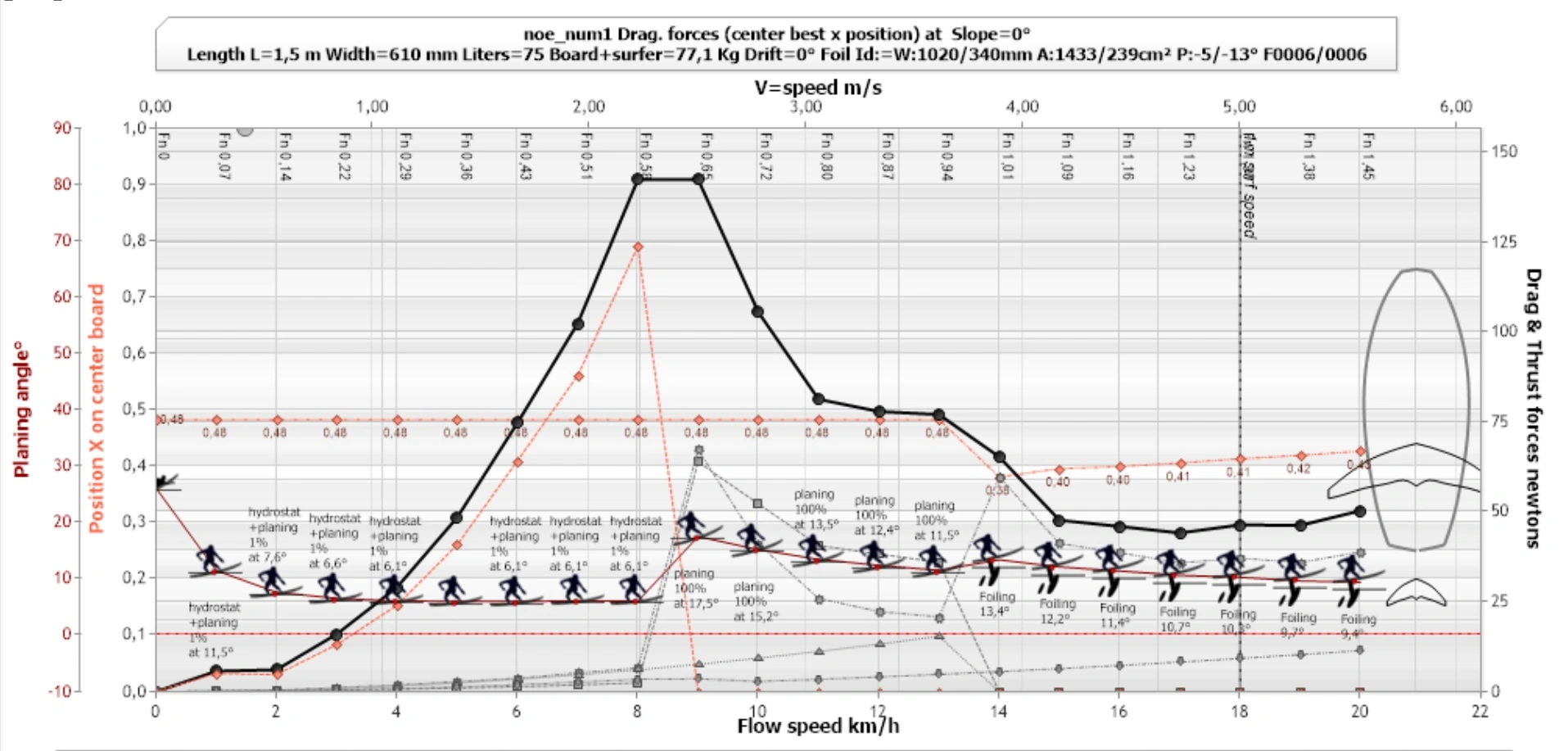
We note that to maintain balance, the surfer will have to move his center of gravity from 0.48 to 0.38. For information, 0.5 means the center of the board, 0 is at the tail and 1 on the nose). We can imagine that the surfer can gain in comfort if his positions do not vary during take-off, this would reflect perfect harmony and mastery of balance planned by the shaper. We will therefore slightly advance the foil by half of this surfer movement: 0.1*board length (1500mm)/2=75mm, to avoid this discomfort revealing poor longitudinal positioning of the foil. : SWD's foil configuration tool allows us to modify the position of the foil, we move the foil forward by 75mm and rebalance the position of the surfer:
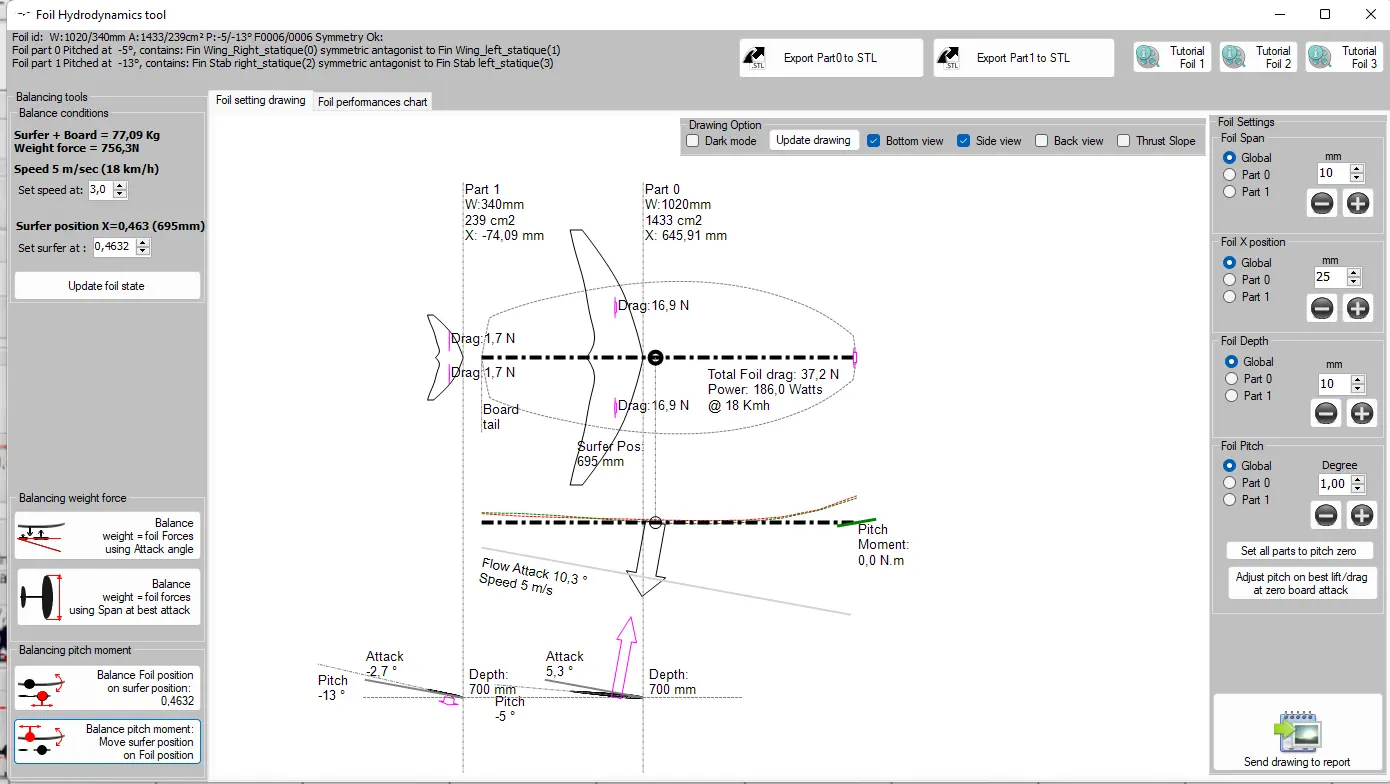
And we update our performance curves with balance positions: Here is a more regular and comfortable position:
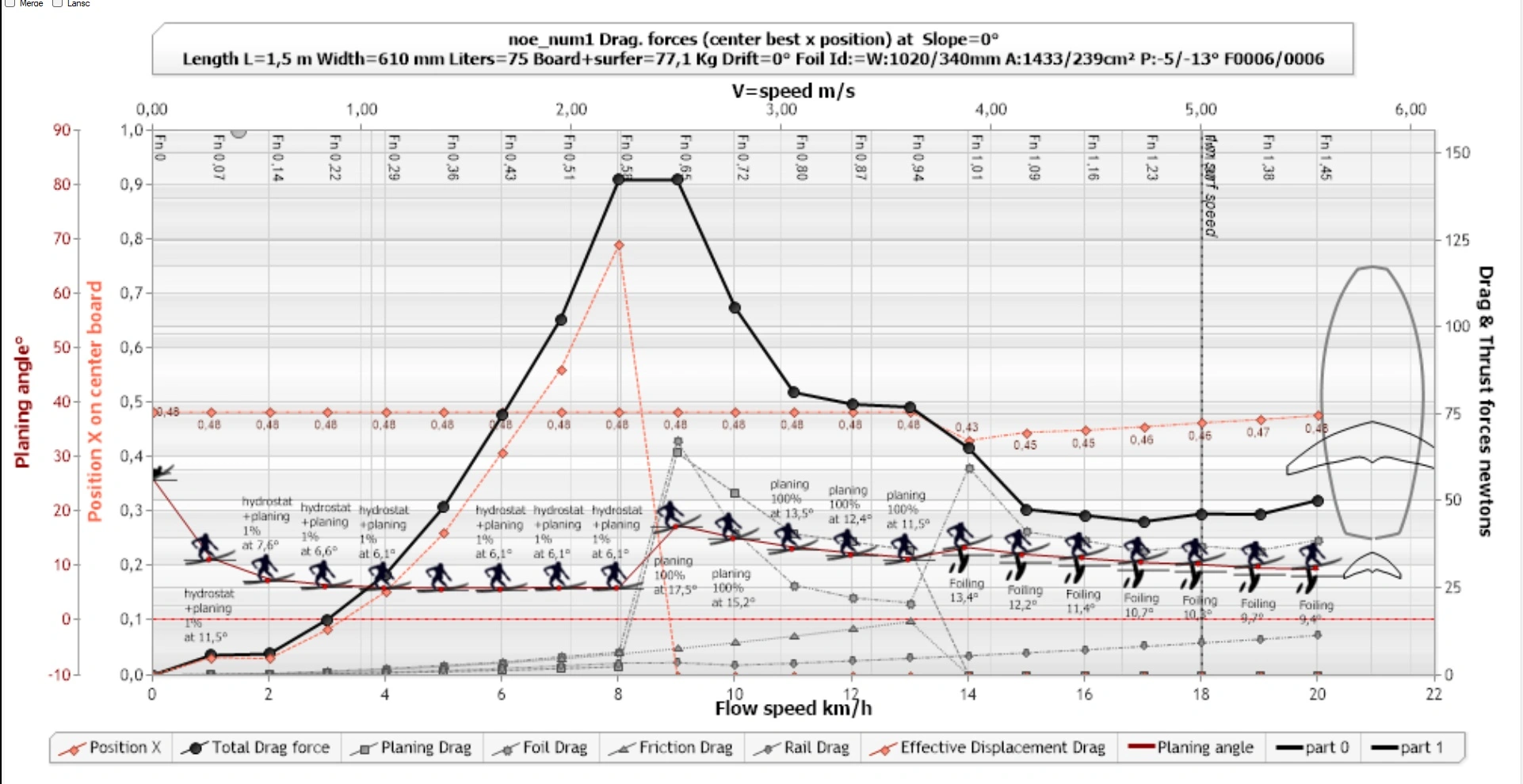
The performance editing tool is therefore a useful tool for the shaper, it will never replace intuition and experience, but it helps to feed the shaper's vision into quantified arguments, which he can compare and test day by day. or the weather prevents it from surfing: